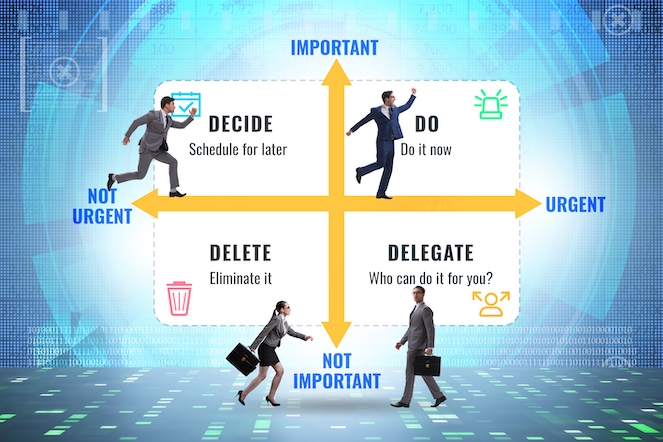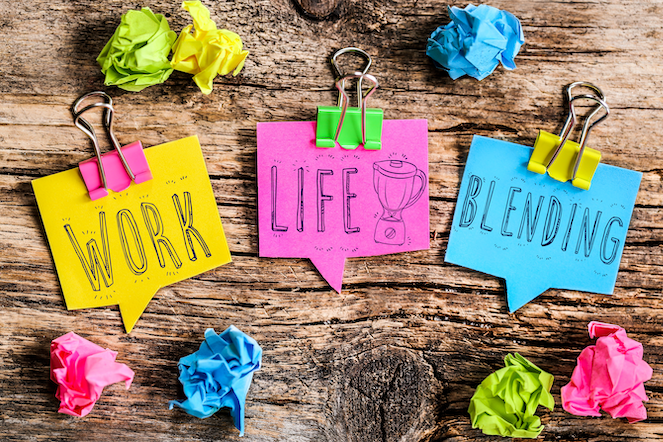Balancing or blending? How do you create a work-life relationship? Holidays may not be the best time to check in with work-life balance, but then again, maybe they are the perfect time. Holidays stretch our balancing act more than most other times during the year. Gifting, gathering, hosting, wrapping, snacking, baking, cooking, shopping, traveling, and church going fill up the calendar leaving little time for work. And yet, work still must be done.
The holidays end and you are so exhausted that you need another holiday, or at least a couple days off just to recoup. You have fallen behind at work and the boss has asked about some upcoming deadlines.
When you return to work and ask your coworkers how their holiday was, some respond with, “Oh it was great! I got to spend time with the family and the in-laws. It was so relaxing! Everything was just great!” You think to yourself, “they must be lying”, only because your holiday, though joyous and fun, wiped you out.

So is there such a thing as balancing? Does work-life balance exist? As a 30-year veteran college basketball coach, I sacrificed plenty of family, friends, and fun time. Balance was not really a doable option for me. Other people may have a truly balanced life, but I rely on another method: blending. From my experiences as a college coach, I learned to blend work and life. They exist together.
Some would say blending is unhealthy and that blending leads to working more hours than you should. With technology today, it’s easy to take work out of the office. You can now work from almost anywhere. But I would argue that to spend more time with family and friends, you sometimes bring work home. It means you might have to do some work on vacations, in the evenings, or on weekends. When you love what you do, it becomes part of you. That doesn’t make you a bad boss, a bad parent, or bad spouse. It makes you dedicated.
And if you have mastered blending, you have a good idea of when, where, and how to manage work and play. This means you are more in control of what you do and when you do it. I would call this self-improvement. As an entrepreneur, who owns two businesses, blending is as much, if not more, a part of my life than it was when I coached. I have more control and freedom to adjust my schedule as needed and work from anywhere.
So how can one blend work and play? Here are some tips.

Choose something you love
What feeds your soul? Are you finding it in your chosen career? In your current job, are you able to get up every day and know that you love going to work and you love what you do? If not, then you may want to reevaluate the job you are in. If COVID has proven anything, it is the fact that people can change jobs that are not fulfilling their needs. There are always options.
When you know you are in love with your job, you enjoy doing it anytime and anywhere. If you know you love your family, hobbies, friends, holidays, etc. just as much, it becomes easier to share the time and hold onto the boundaries that make blending possible. In other words, when you are working you work and when you are playing, you play. And there might be some overlap.
James A. Michener reminds us, “The master in the art of living makes little distinction between his work and his play, his labor and his leisure, his mind and his body, his information and his recreation, his love and his religion. He hardly knows which is which. He simply pursues his vision of excellence at whatever he does, leaving others to decide whether he is working or playing. To him he’s always doing both.”

Establish priorities
The ability to prioritize is critical to blending. What is most important to you in your life? Family? Work? Friends? Parents? Children? Your education? Growth in your company? Exercise and working out? This list could go on and on. Only you know what your priorities are.
List your priorities in order. It doesn’t have to be final. It can be a working, movable “list in progress” of priorities. Establish a cadence or timing that makes sense to you for review. It could be the first Monday every month or every holiday weekend. While it is important to keep track of them and to keep them in front of you, you must choose what works for you.
Your list of priorities is not a to-do list. It is simply an ordered list of which categories need to be adhered to first. This list guides and directs your day-to-day and week-to-week to-do lists. Your priorities are outlined to give you clarity for your work and play and they help you foresee when the blending could occur.
With your priorities in place, you can begin to plan your days and weeks. For example, your top priority is your family. You have a young daughter who is starring on the dance team at a school program. Because you have pre-planned with your priorities in mind, you have the upcoming date set on your calendar and your intention is to attend her event. You make it to the theater on time and wait for the show to begin. Then unexpectedly you receive a very important phone call. Now the choices begin. You can ignore the call, answer the call communicating that you will call back later, or take the call and leave the performance.
The mindset of balancing would be, you can’t take the call because balancing implies that you are either doing work or play, and not mixing. Blending gives you more choices and allows you the ability to do both guilt-free. It’s all in the priorities and planning.
You decide to answer the call, knowing that this call is important, but because your family is the top priority, you respond to the caller by letting them know you are at a very important family event and that you will call them back at an appropriate and acceptable time. That is blending.
Identify your time hacks
Distractions throughout the day are unavoidable. The question is how much time are you giving them? This is important because time is crucial to successful blending. If you can alleviate unnecessary time hacks, you save time in the long run. In other words, try to keep distractions to a minimum.
Sometimes, though, attending to distractions are an important function in the day. Putting out fires and managing other people is important work and must be addressed. Those distractions are out of your control and are more difficult to avoid. However, the distractions I am referring to are the ones you can control. For example, social media, click bait emails that lead you down the rabbit hole, unnecessary screen time, phone calls that you can take later, and other day-to-day distractions. These are the unnecessary, time consuming, hacks that drain the hours in your day and it’s easy to get swept up in them.
If you can figure out what your time hacks are, then you can make a commitment as to how much, or how little, minutes per day you intend to give to them. Eliminate as many as possible.

Manage your to-do list
Most people have some sort of to-do list or schedule of events for every day. What happens when items on the to-do list do not get checked off for the day. Do you stress? Do you roll them over tomorrow? What happens to your unfinished tasks on the day?
Managing the to-do list points back to priorities. Which tasks are most important, and which are secondary or tertiary. What must be done first, what is going to take the most time, and what can be done in 5 minutes. The things that must get done first are flagged differently or put at the top of the list. When your day begins, those must come first.
The other items can be dealt with after the priorities get done. Sounds easy, but is not so easy in practice. The distractions come into play, or one particularly tough task takes extra thought and prep before completion. You keep putting it off, maybe even rolling it over to tomorrow, or the next day, or the next.
If you find yourself rolling things over for multiple days, then it probably needs to be broken down further or delegated. For example, if the task seems too big, try breaking it down into smaller pieces. If it seems too hard or too time consuming, maybe this is one to delegate to someone else.
Whatever you do, the rolling over of tasks causes a buildup of anxiety that may get in the way of true blending. For example, if you have not completed something that is supposed to be done this week and you keep rolling it over into the next day, soon it will be the end of next week and that task is still there. Now, because that task is still there, you have anxiety about it and don’t feel like you can blend the other parts of your life that are important to you.
Unplug for a few
When you work hard, play hard, and wear a lot of hats, it is important to find your space to unplug and recharge. Work and play are time consuming and sometimes both cause similar stressors. “Me time” is important for your own health and well-being, even if it is for a few minutes or seconds. One big breath before heading to a meeting or beginning a task could help lower your stress. Taking one minute to regroup before entering the home at the end of the day can alleviate the day’s hustle and bustle so you can wear a smile when you walk into your house to see your family.
Know the difference between blending and working all the time – there is a difference.
One of the criticisms of blending is that there are no boundaries. While this is a legit criticism, it takes practice to master the art of blending.
To be clear, blending does not mean working all the time regardless of where you are. It does not mean working while sitting with your family at the dance recital or dinner time. It’s not reading text messages while driving or talking to someone else.
It means working while at work and playing while at play, and that sometimes they overlap a bit. If you have chosen work that feeds your soul, have your priorities lined up, eliminated most of the controllable time hacks, managed your to-do list and found time for you, you are well on your way to successful blending.

The Last Step
The last step is to give yourself grace while you work on work-life blending. It may never be perfect, but one thing for sure, the more practice you have the better it will become. When it’s working, you will know because you will feel free and in control both at work and when you are living the other very important facets of your life.
When work and play feel the same, you have mastered the art of blending. You have found what feeds your soul both at work and at play.
Mental Health, Ownership, Self-improvement, Work-Life Balance, Work-Life Blending
